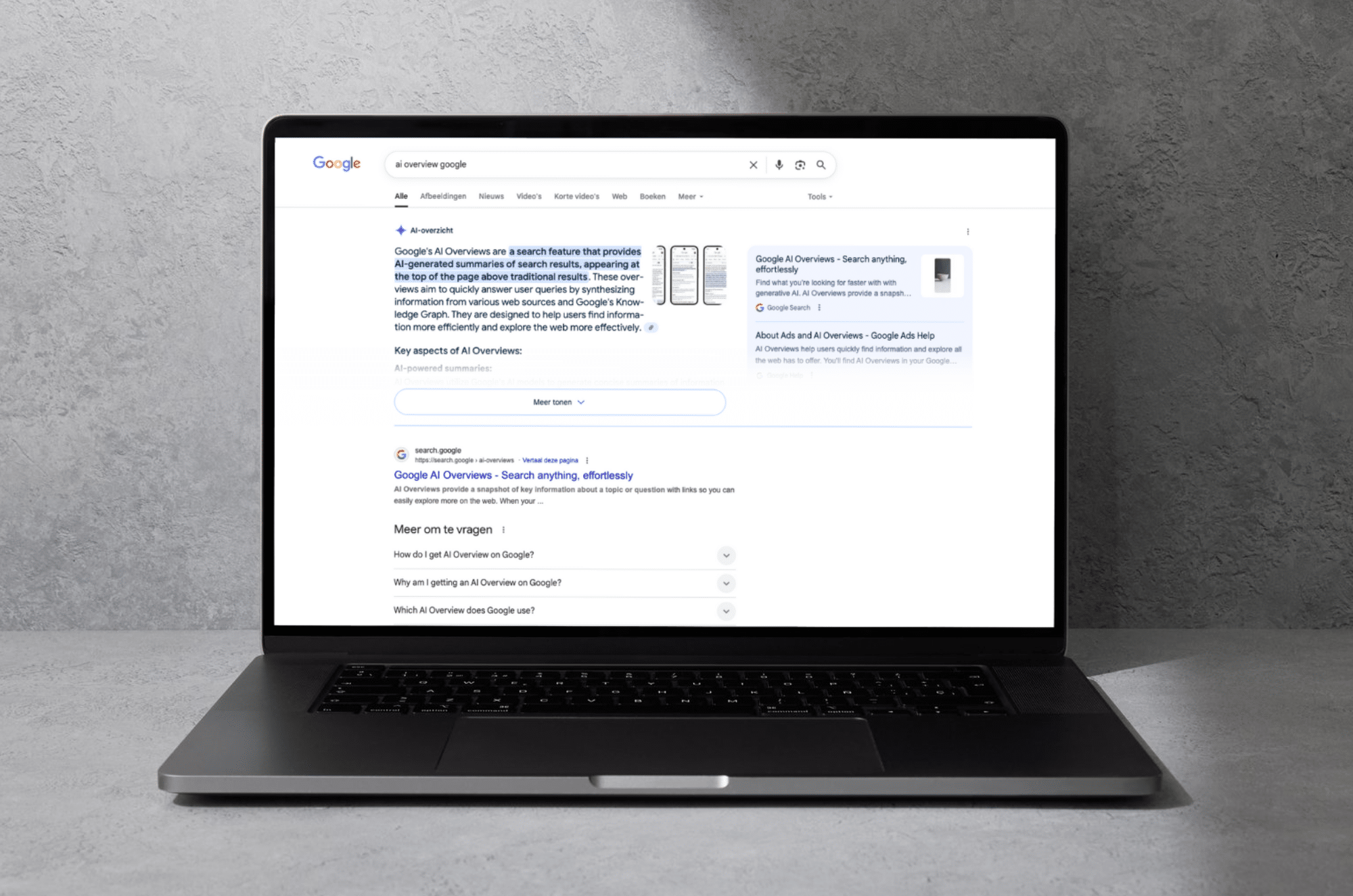Google’s Gamechanger and GEO: Getting Found by AI

In May 2025, Google rolled out its long-awaited “AI Overviews” in Europe, after being launched outside the EU back in 2024. Since then, AI-generated answers have become a staple in our search behaviour. A shift that is rewriting the rules of the SEO game drastically.
How do you deal with this as a marketing or communication professional? And is it a blessing or a curse for the communication industry?
A Special Shift
The shift Google is making right now is a special one. Back when the platform took off around the turn of the century, everything was about long-tail search queries. The more specific your question, the better the result. But as Google got smarter, the focus shifted toward shorter, more efficient keywords. After all, Google had become pretty good at understanding what you meant.
Now, the tide is turning once again. And long-tail is back. Why? The answer is typical of the time we’re in: AI is calling the shots.
Users are asking full questions to ChatGPT and other language models. These AI tools fire back with instant, fully-formed answers. With AI Overviews, Google is now following that same trend. Instant answers, no clicking required.
What is GEO?
Great for users. Tricky for your web traffic. The impact on SEO is huge. If there’s an AI Overview on a search results page, the average organic click-through rate drops by around 70% (Seer Interactive, September 2024).
So what’s the golden opportunity? Getting your content featured in the AI Overview. Searchers are increasingly trusting Google’s AI-generated answers, which means any brand mentioned in those answers is instantly seen as relevant and credible.
In other words: your content needs to be recognised and used as a source in that single, generated answer. That’s what we call GEO: Generative Engine Optimization. It’s how you make sure generative AI draws from your expertise when someone asks a related question. That could be in Google’s AI Overviews, but also in tools like ChatGPT, Gemini or Perplexity.
Blessing or Curse?
As mentioned, this shift has serious implications for traditional SEO. As a marketer, you used to be able to climb the rankings using clever keywords and some technical know-how. But those keyword tricks? They’re quickly becoming a thing of the past.
A curse for your marketing team?
Not at all. It just means the focus is shifting. AI selects content based on relevance, clarity and trustworthiness. And that’s actually a win for communication professionals.
If your message is solid, clearly structured and your website is seen as trustworthy, you’re ahead of the game. Communication is going back to what it’s really about: strong content, not keyword stuffing.
How do you make sure AI picks up on your brand?
The rules are changing, and that calls for a new strategy. So… how do you make sure your content gets picked up by AI? Here are 5 practical tips:
- Write for both humans and machines
Think in clear paragraphs, bullet points and subheadings. Avoid vague buzzwords and overly complicated sentences. People don’t like that; AI likes it even less. - Be transparent
Use sources, data and real-world examples. Generative AI tools favour authoritative content (just like humans do, by the way). Well-supported answers are far more likely to be picked up. - Structure is everything
AI doesn’t read like we do. It relies on hierarchy and structure to understand your content. So use clear formats: schemas, Q&A blocks, numbered steps or bullet lists. FAQs work especially well. - Think in questions, not just answers
Speaking of FAQs: AI systems generate output based on the user’s question. The better your content matches those questions, the more likely it is to be used. So always start from your audience’s point of view. What do they want to know? - Use a consistent tone of voice
AI generates new answers every time. The more consistent your content sounds, the easier it is for AI to recognise — and replicate — your brand. Read more about why tone of voice matters here.

From Keywords to Connection
Sure, there are still smart tactics to boost visibility. But the real shift is from findability to value. And if you ask us, that’s great news for anyone in the communication profession.
If your brand delivers accessible, relevant and honest content, you’ve already got an edge. Not because you’re gaming the system, but because you actually have something to say.
So don’t see GEO as a threat. See it as an opportunity. A chance to move beyond keywords and focus on real connection. At gr8, we help brands communicate in a way that’s both AI-ready and deeply human.
